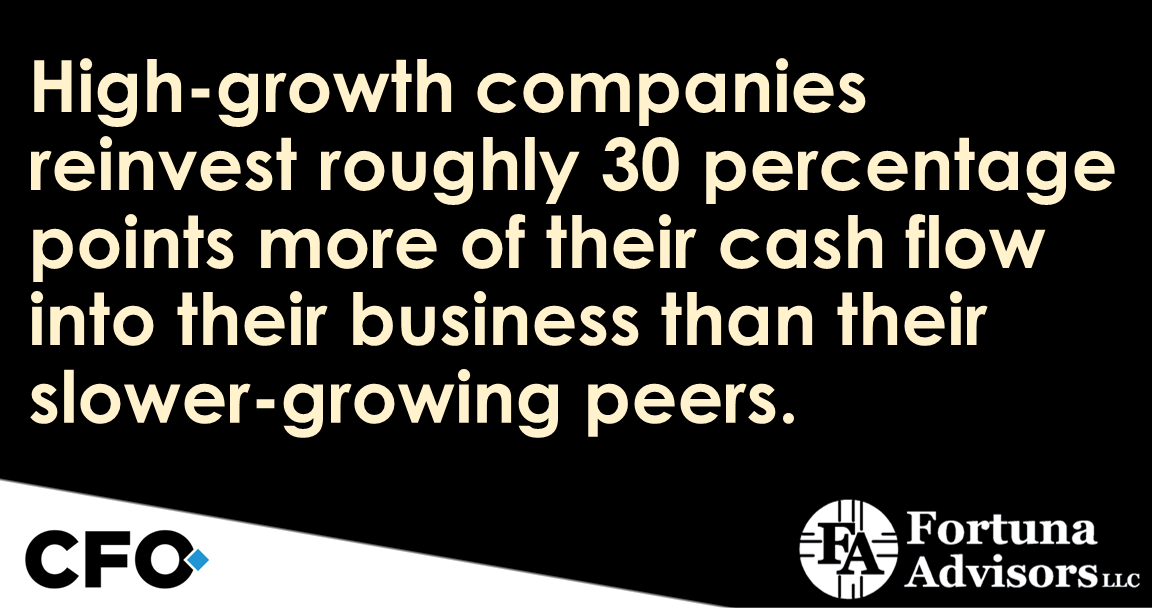In 2016, S&P 500 companies returned $877 billion to shareholders as dividends and net share buybacks. Distributions to shareholders increased by nearly 30% from 2007 levels—but, unfortunately, such distributions also represented 90% of these companies’ net income for the year.
Cash returned to shareholders is meant to send the positive signal of a healthy business. But, increasingly, this indicator might be glowing red.
While companies have honed their skills in cost control and shareholder distributions, sales have only just eked past 2014 levels. On top of that, the expected long-term earnings growth rate of S&P 500 companies is currently at its highest level in nearly six years.
Despite those high investor expectations, we find that the forward-looking equity risk premium for the index is at its lowest level in nearly two years. All in all, many stocks are priced for perfection and efficiency gains are unlikely to close this value gap. So what are you doing to help prepare your organization for growth?
To be sure, investors’ hunger for growth over cash returns isn’t new. In 2016, high-revenue-growth, non-financial S&P 500 companies had 5-year total shareholder returns (“TSR,” meaning share price appreciation plus dividends paid) that were 50 percentage points higher than their slower, but positive-growing peers on average. Contrast that with the companies that returned the greatest percentage of their cash flow back to investors, who saw their TSRs trail their lower distributing peers by nearly 30 percentage points. It’s clear that investors value growth over cash in hand.
High-growth companies have capital-deployment strategies that allow them to capitalize on opportunities. Growth requires investment, and these companies invested 30 percentage points more of their cash flow back into their business than their slower-growing peers.
The high growers also returned less of their cash flow back to investors. The amount of cash flow returned as net share buybacks was similar between the two groups. But the higher growers opted for greater flexibility and control over cash flows by having less capital allocated to dividend distributions.
Planning, Investment and Performance Measurement
To prepare for growth, CFOs should start at their planning process. Many companies run two concurrent but separate processes for profit-and-loss and capital planning. Growth needs capital, as we saw with the high growth companies, but splitting your P&L planning and capital planning processes tends to drive an underfunding of top-line growth.
The high growth in your spreadsheet may never materialize once it’s hit by the reality of your capacity constraints. To mitigate that capacity shortfall, consider adding two investment metrics to your P&L evaluation: reinvestment rate and reinvestment effectiveness.
Reinvestment rate is a measure of how much of your cash flow you’re putting back into your business in the form of capex, R&D, net working capital, and acquisitions. Reinvestment effectiveness gauges the implied ability embedded in your forecast to convert investment to revenue. Comparing these two metrics relative to your historical and forecast performance figures can uncover gaps in your potential to realize growth.
After higher level planning, begin your capital approval process – which is where the rubber meets the road. The capital approval process works as a balancing act between numbers and narrative, with the business need reinforcing the financials and the financials providing substance to the need.
But that can become a test of a finance manager’s imagination if he or she doesn’t find a way to make it real. Investors will have trouble believing in forecasts if no one in a company is being held accountable to achieve the results.
Project risks are generally focused around costs of building the project, while the risk that you don’t receive the benefits you paid for is left up to chance. To increase your odds of creating value, you can generate a benefits schedule at the time of the request for project approval.
The benefits schedule details what improvements will be achieved post-build and provides a timeline of when they’ll be realized. It doesn’t need to only consist of financial hurdles. Other quantifiable benefits can be used, as long as they can help you identify methods of collecting the data. That will help focus your team on getting results rather than just designing projects.
The goal in pursuing growth isn’t to avoid mistakes, but to avoid the mistakes that take you out the game. Valuable information about what doesn’t work can be collected from failed projects as a way of making the next project better.
Centralized management may be needed for large scale-projects to avoid “blow up” risks, but you should allow your staff some freedom at a segmented level to spark innovation throughout the organization.
Financial performance measures allow autonomy by providing accountability. A performance measure like Economic Profit can allow senior finance managers to monitor profitable growth strategies across various business models using a single metric.
Economic Profit balances growth and returns, while treating assets like a P&L cost to the business. It’s a comprehensive view of growth projects that enables managers to improve the tradeoff of sales, operating efficiency, and asset productivity.
S&P 500 companies have pushed distributions to the breaking point at current earnings levels, and investors still want more. The sustainable solution will be for companies to reinvest back into their business to fuel future earnings growth in order to better support dividend and buyback plans. Reassessing your capital deployment strategies can allow you to put your best foot forward on your path to growth.

